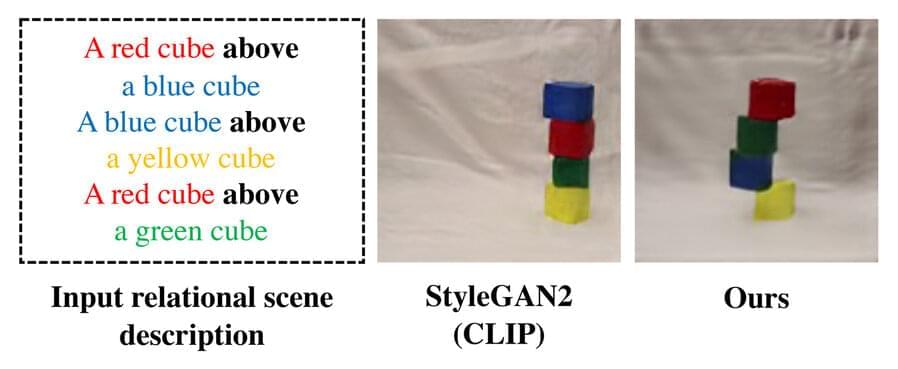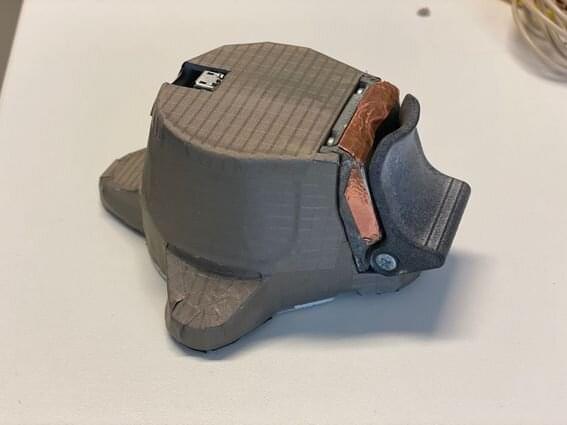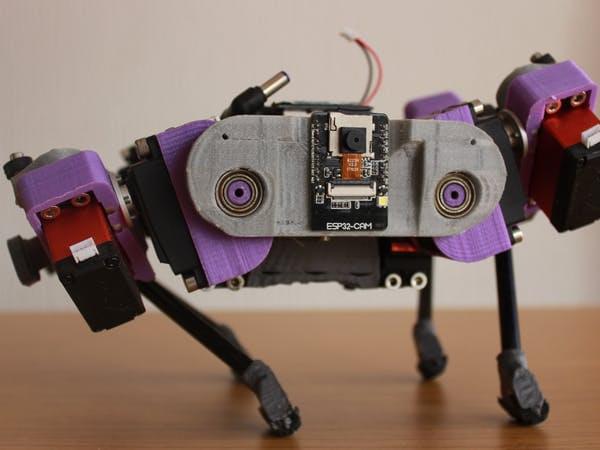A team scoured the human proteome for antimicrobial molecules and found thousands, plus a surprise about how animals evolved to fight infections.


Forget losing your job to robots, Scientists have created robots that can reproduce. ‘Xenobots’ are capable of ‘self-replicating’ themselves. They are made up of stem cells taken from frogs. Astounded? Watch this report by Palki Sharma for the details.
#Gravitas #Robots #Xenobots.
About Channel:
WION-The World is One News, examines global issues with in-depth analysis. We provide much more than the news of the day. Our aim to empower people to explore their world. With our Global headquarters in New Delhi, we bring you news on the hour, by the hour. We deliver information that is not biased. We are journalists who are neutral to the core and non-partisan when it comes to the politics of the world. People are tired of biased reportage and we stand for a globalised united world. So for us the World is truly One.
Please keep discussions on this channel clean and respectful and refrain from using racist or sexist slurs as well as personal insults.
Check out our website: http://www.wionews.com.

When humans look at a scene, they see objects and the relationships between them. On top of your desk, there might be a laptop that is sitting to the left of a phone, which is in front of a computer monitor.
Many deep learning models struggle to see the world this way because they don’t understand the entangled relationships between individual objects. Without knowledge of these relationships, a robot designed to help someone in a kitchen would have difficulty following a command like “pick up the spatula that is to the left of the stove and place it on top of the cutting board.”
In an effort to solve this problem, MIT researchers have developed a model that understands the underlying relationships between objects in a scene. Their model represents individual relationships one at a time, then combines these representations to describe the overall scene. This enables the model to generate more accurate images from text descriptions, even when the scene includes several objects that are arranged in different relationships with one another.

Summary: A new AI algorithm recognizes the complex range of emotions invoked when people listen to pieces of music.
Source: UPF Barcelona.
Music has been of great importance throughout human history, and emotions have always been the ultimate reason for all musical creations. When writing a song a composer tries to express a particular feeling, causing concert-goers to perhaps laugh, cry or even shiver.


Stethoscopes are among doctors’ most important instruments, yet there have not been any essential improvements to the device since the 1960s. Now, researchers at Aalto University have developed a device that analyzes a broad range of bodily functions and offers physicians a probable diagnosis as well as suggestions for appropriate further examinations. The researchers believe that the new device could eventually replace the stethoscope and enable quicker and more precise diagnoses.
A startup called Vital Signs is taking the device to the market. The researchers are currently testing the device in a clinical pilot trial. The intention is to launch the product to the most important European markets by the end of 2023.
“We have a well-functioning prototype, and the development path is clear,” says Alexis Kouros, the doctor leading the research team at Aalto.

Created by Wissam Tedros, RoDog is a reliable and hobby-level quadruped robot constructed out of accessible parts. The project implements a dozen RC servos actuators, measurement units such as a gyroscope, accelerometer, magnetometer, and unity for inertial measurement, an ESP32-CAM for streaming and WiFi connectivity, an OLED display, and more, all within a 3D-printed casing.
Entirely open source, Tedros’ post includes the BOM and all necessary files, as well as notes on mechanical design and assembly and data obtained from a MATLAB Simulink trial of the inverse kinematic control used with the embedded system. RoDog features a custom STM32F4 board for its brain, with the design available in full detail. The bot is quite compact at 20×10×5 cm, and the 12 motor controller board incorporates position and current feedback.
It is still in development 0, having gone through many iterations and tweaks, most of which are logged in the project files. However, its current form should perform well as a hobbyist’s robotic pet with room for add-ons.

Micro-sized cameras have great potential to spot problems in the human body and enable sensing for super-small robots, but past approaches captured fuzzy, distorted images with limited fields of view.
Now, researchers at Princeton University and the University of Washington have overcome these obstacles with an ultracompact camera the size of a coarse grain of salt. The new system can produce crisp, full-color images on par with a conventional compound camera lens 500,000 times larger in volume, the researchers reported in a paper published Nov. 29 in Nature Communications.
Enabled by a joint design of the camera’s hardware and computational processing, the system could enable minimally invasive endoscopy with medical robots to diagnose and treat diseases, and improve imaging for other robots with size and weight constraints. Arrays of thousands of such cameras could be used for full-scene sensing, turning surfaces into cameras.
To persist, life must reproduce. Over billions of years, organisms have evolved many ways of replicating, from budding plants to sexual animals to invading viruses.
Now scientists have discovered an entirely new form of biological reproduction—and applied their discovery to create the first-ever, self-replicating living robots.
The same team that built the first living robots (” Xenobots,” assembled from frog cells—reported in 2020) has discovered that these computer-designed and hand-assembled organisms can swim out into their tiny dish, find single cells, gather hundreds of them together, and assemble “baby” Xenobots inside their Pac-Man-shaped “mouth”—that, a few days later, become new Xenobots that look and move just like themselves.

This is what we are experiencing over the next ten years in the near vertical rate of change. We are in these last stages of these changes where we can shape this future into the flowers analogy. The confluence of environmental, social, biological, physical, digital-inspired, technological, quantum-infused, cosmological, creator culture; an endless list. All significantly transforming our lives. We are in the time where creativity, innovation, intuition, imagination, inspiration, purpose, meaning can be driving us.
What we are experiencing forms my top 10 omni wishes for 2022 that will have outsized impact on our lives.
Top Ten Omni Wishes.
Full Story:
I work pro bono daily across communities of more than 100,000 CEOs, investors, authorities/experts/scientists, and thought leaders. From insights gained in this work, I’m providing my top ten omni (multiple sector) wishes for 2022 that will have exponential impact.
Inline with the theme of this article and while writing this article, I’m experimenting with a new A.I. writing tool based upon OpenAI and GPT-3 from Sudowrite.